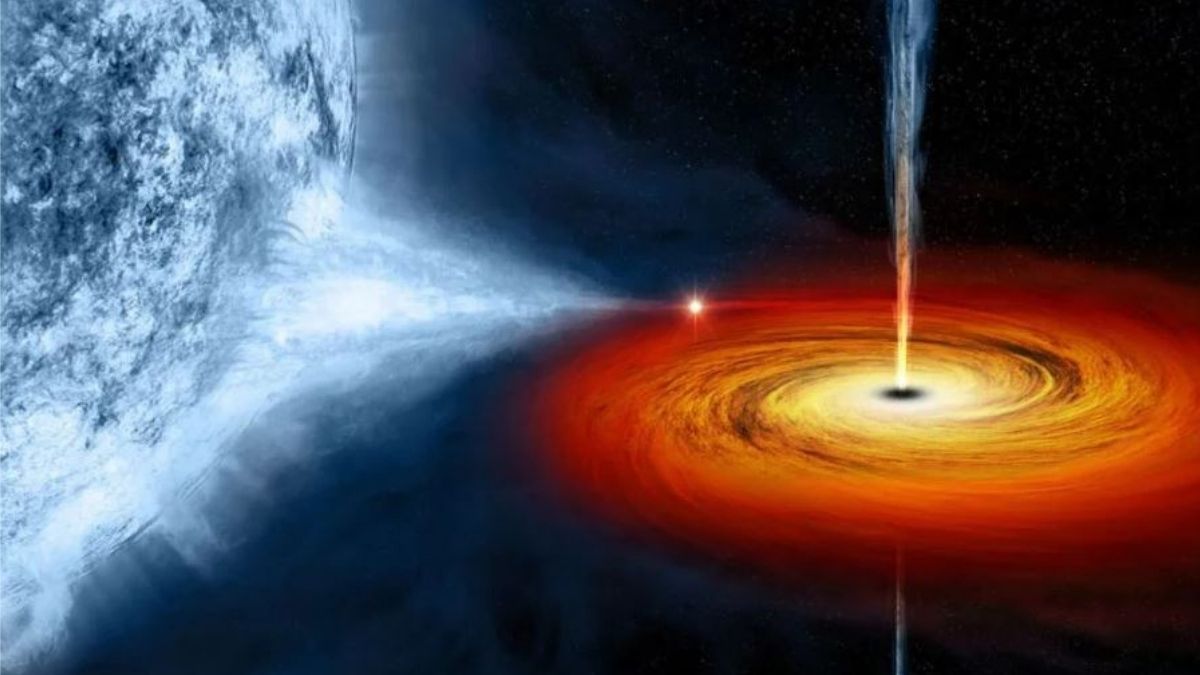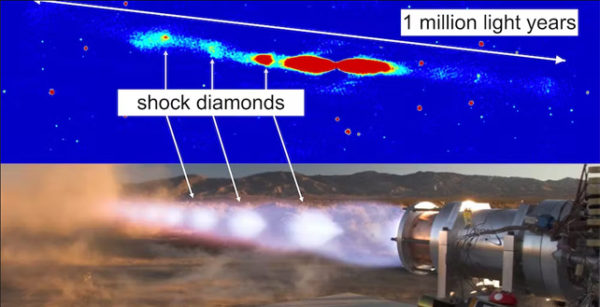Science & Tech
Astronomers Just Discovered a Massive Black Hole Jet 50 Times Larger Than Its Galaxy
The unusual black hole jet spans more than a million light years.

Western Sydney University’s Department of Astronomy has been credited with the discovery of what might be the largest black hole jet known to exist.
Stretching for more than a million light years from one end to the other, the jet erupts away from the black hole with an incredible amount of energy, traveling almost as fast as the speed of light.
It belongs to galaxy NGC2663, which is relatively close to us in cosmic terms—its distance away is only 93 million light years. That’s basically a couple of suburbs distant from our very own Milky Way, if our galaxy were a house.
When viewed via a regular telescope, the starlight from this galaxy has the recognizable oval shape of a normal elliptical galaxy. However, it contains roughly 10 times as many stars as our Milky Way.
Until astronomers observed NGC2663 with CSIRO’s Australian Square Kilometre Array Pathfinder (ASKAP) in Western Australia—a network of 36 radio dishes forming a single super-telescope—the galaxy appeared to be ordinary.
ASKAP revealed a massive jet of matter being ejected from galaxy NGC2663 by a centralized black hole. If our eyes were able to view it in the night sky, this high-powered stream of matter would be larger than the Moon.
It is approximately fifty times larger than the galaxy itself.
Although scientists have discovered similar black hole jets in the past, the enormous size of this one and its proximity to the galaxy NGC2663 make it unique.
So, what did astronomers observe when they received a closer look of the jet thanks to the precision and power of ASKAP?
A study, which was conducted under the direction of Western Sydney University PhD student Velibor Velovi and will be published in the Monthly Notices of the Royal Astronomical Society journal, was just accepted for publication showing how the stuff that exists between galaxies is pushing back on the sides of the black hole jet.
A similar effect may be seen in jet engines, and this process is analogous to that effect.
The pressure in the surrounding environment causes the exhaust plume to be pushed to the sides as it travels through the atmosphere. Because of this, the jet will expand and compress as it travels, creating a pulsing effect.

As the image above shows, there are consistent bright spots within the jet. Due to the shape of these spots, they are referred to as “shock diamonds.”
It shines brighter when the flow is squeezed into a smaller space.
Shock diamonds have been spotted in a variety of places, including smaller, galaxy-sized black hole jets and human-made jet engines.
Astronomers have witnessed black hole jets crashing into dense clouds of gas, lighting them up as they sliced through the clouds. However, a black hole jet being confined from the sides makes a more subtle impact, which makes it more difficult to observe.
Prior to the discovery of NGC2663, scientists had never seen this effect on such a massive scale.
This informs us that there is sufficient matter in the area surrounding NGC2663 in the intergalactic space to exert a force against the edges of the black hole jet. In response, the jet warms up the material while also increasing pressure at the same time.
It’s an example of a feedback loop: matter from other galaxies flows into a galaxy, the galaxy forms a black hole, the black hole releases a jet, and the jet causes the flow of matter from other galaxies to slow down.
As the universe continues to expand, these jets have an effect on the way gas condenses into galaxies. The fact that such a direct example of this relationship is being shown here is quite intriguing.
The EMU survey, which is also responsible for the discovery of a new form of mystery astronomical object called a “Odd Radio Circle,” is continuing to survey the Universe.
As astronomers proceed, we will gain a deeper comprehension of how black holes directly influence the galaxies that grow around them.
Prepare yourself for a plethora of surprising discoveries in the near future.
Typos, corrections and/or news tips? Email us at Contact@TheMindUnleashed.com
